About the Standard
ISO 9001:2015

What is ISO 9001:2015?
According to ISO.org, ISO 9000:2015 describes the fundamental concepts, vocabulary, and principles of quality management which are universally applicable to the following:
• Organizations seeking sustained success through the implementation of a quality management system;
• Customers seeking confidence in an organization’s ability to consistently provide products and services conforming to their requirements;
• Organizations seeking confidence in their supply chain that their product and service requirements will be met;
• Organizations and interested parties seeking to improve communication through a common understanding of the vocabulary used in quality management;
• Organizations performing conformity assessments against the requirements of ISO 9001;
• Providers of training, assessment or advice in quality management;
• Developers of related standards.
ISO 9000:2015 specifies the terms and definitions that apply to all quality management and quality management system standards developed by ISO/TC 176.
An organization cannot certify to ISO 9000. Companies can and do certify to ISO 9001:2015, the standards #1 Quality Management System standard. ISO 9000 helps companies understand ISO 9001 provides globally accepted definitions.
ISO 9001:2015 is the most current version of the standard. It was reviewed and confirmed in 2021 and is the most recent version of the standard. Let’s review the clauses of the standard.
What are the ISO 9001 Requirements?
An Overview of the ISO 9001 Requirements
Although there are a total of 10 clauses in the ISO 9001:2015 Standards, the first 3 are not auditable. That leaves 7 clauses or sections (4-10) that are auditable. In addition, there are sub-clauses that have to do with the Plan-Do-Check-Act system. To receive an ISO 9001 Certification, you need to satisfy the requirements of clauses 4 through 10. You will be audited and must pass the audit before you can receive ISO certification.
ISO 9001 was first published in 1987 by the International Organization for Standardization (ISO), an international agency composed of the national standards bodies of more than 160 countries. The current version of ISO 9001 was released in September 2015.
ISO 9001:2015 Structure and Clauses
The Clauses are the sections of the standard that are typically auditable. However, the first 3 clauses are not, so they will not be addressed here. Let’s start with the first auditable clause:
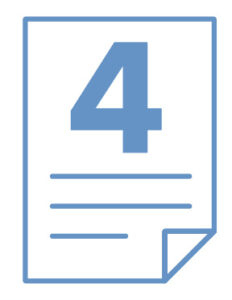 ISO 9001 Clause 4 – Context of the Organization
ISO 9001 Clause 4 – Context of the Organization
Context of the Organization has to do with identifying and assessing both internal and external issues that could affect your management system’s ability to deliver quality management results. Examples of external issues include potential legal concerns, competitive and economic environments, and social issues. These issues can be negative or positive and can be national, local or International.
Considering internal issues such as values, culture, knowledge and performance of your organization is also a part of understanding the context of your organization.
ISO 9001 Clause 4 – Subclause 4.2 Understanding the Needs and Expectations of Interested Parties
This clause can help you to uncover opportunities within your organization by identifying who your interested parties are and how the requirements of those interested parties are met as they relate to your quality management system.
ISO 9001 Clause 4 – Subclause 4.3 Determining the Scope of the Quality Management System
In general, the scope of your quality management system describes what your company does and takes into consideration 3 main criteria: 1) The products and services of your organization; 2) The internal and external issues as referred to in 4.1; 3) The requirements of relevant parties as referred to in 4.2
“The organization shall determine the boundaries and applicability of its quality management system to establish its scope.”
ISO 9001 Clause 4 – Subclause 4.4 Quality Management System and its Processes
“The organization shall establish, implement, maintain and continually improve a quality management system, including the processes needed and their interactions, in accordance with the requirements of this International Standard.
The organization shall determine the processes needed for the quality management system and their application throughout the organization…”
ISO 9001 Clause 4 – Subclause 4.4.2 Documented Information
“To the extent necessary, the organization shall: maintain documented information to support the operation of its processes; and retain documented information to have confidence that the processes are being carried out as planned.”
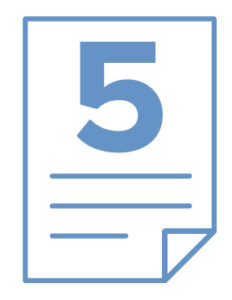 ISO 9001 Clause 5 – Leadership
ISO 9001 Clause 5 – Leadership
The section of the ISO 9001 Standards includes subsections addressing leadership involvement and that there is a commitment to both the quality management system and to customer focus.
Top management is required to demonstrate leadership and commitment regarding the QMS. They need to make sure that among other things, that the quality policy and objectives are compatible with the business’s strategic direction, the QMS is integrated into the company’s business processes, and the policy is understood and followed.
There are additional requirements including making the policy available to interested parties and being available as documented information.
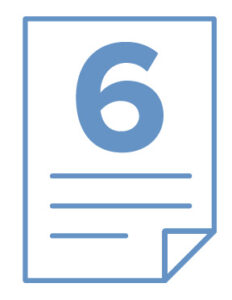 ISO 9001 Clause 6 – Planning
ISO 9001 Clause 6 – Planning
Planning asks an organization to plan for uncertainties by proactively considering risks and setting up control measures to address these potential risks. This planning section also requires an organization to identify objectives which can be used to evaluate, monitor, and track progress and make plans for any changes that may happen in the quality management system.
This section recommends a proactive approach to handling risks, instead of waiting for problems to occur. This proactive approach of planning for risks allows us to avoid negative situations and helps to reduce our liabilities and at the same time, increase the quality of our products or services.
This section isn’t just about avoiding risks, it is also about uncovering opportunities to create better products or services or to improve our management and manufacturing practices.
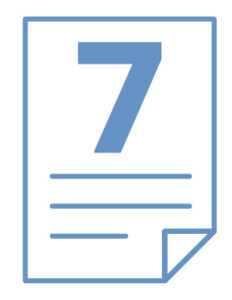 ISO 9001 Clause 7 – Support
ISO 9001 Clause 7 – Support
Clause 7 is about the resources you must have in place to help you become more successful as it relates to the quality management system.
Leadership and management are encouraged to determine the right number and quality of resources need to effectively and efficiently run the organization. Organizations need multiple resources including equipment, training, people, infrastructure, communication channels and the right environment for integration and operation of these resources.
Clause 7 has subsections covering support resources including but not limited to monitoring and measuring resources, people, communication, competence, organizational knowledge, awareness and much more. The effectiveness of the support is expected to be evaluated and adjusted accordingly to make sure the organization delivers services and products with high quality and that customer expectations and requirements are met.
In addition, this clause covers requirements for the quality management documentation and includes recommendations for creating and updating documents and control of documented information.
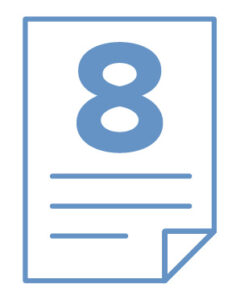 ISO 9001 Clause 8 – Operation
ISO 9001 Clause 8 – Operation
Clause 8 in general is requiring organizations to plan in advance how they will deliver their services or manufacture their products. This requirement takes into consideration the product requirements and any quality objectives that may need to be included, resources and documents that might be important and what type of inspection or assessment activities need to be in place to make sure services and products meet requirements.
This clause also covers manufacturing requirements and includes the concepts of inspection methods, procedures and risk management:
ISO Standards Operation
“Ensuring that product and service inspection and testing methods and procedures are defined and documented, along with their respective acceptance criteria;
Ensuring that each specified inspection, test and monitoring activity is recorded through work orders, tags, tickets, forms, electronic data collection systems, etc.;
Undertaking risk analysis studies of key manufacturing processes and ensuring mitigations arising from risk management are incorporated into key product and or process designs;”
ISO 9001 Clause 8 – Subclauses 8.1 – 8.7
These include communications with customers, determining and review of requirements for products and services, changes in the requirements for products and services, the design and development, planning, input and controls of products and services.
These subclauses also cover the release of products and services and the control of non-performing outputs.
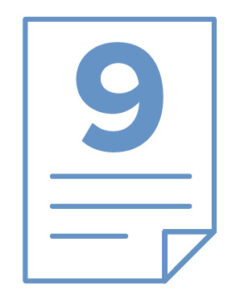 ISO 9001 Clause 9 – Monitoring, Measurement, Analysis, and Evaluation
ISO 9001 Clause 9 – Monitoring, Measurement, Analysis, and Evaluation
Clause 9 is all about monitoring and testing the quality management system you have created and it’s about making sure you keep organized documentation surrounding the QMS.
“The organization shall evaluate the performance and effectiveness of the quality management system.”
“The organization shall keep appropriate documented information as evidence of the results.”
This clause asks companies to monitor their customer’s perception of your performance when it comes to meeting their needs and requirements. This can be accomplished with customer surveys or feedback on delivered products or services and include other choices you can use to evaluate your customer’s perception of your performance.
ISO 9001 Clause 9 – Subsection 9.1.3 Analysis and Evaluation
This subsection of Clause 9 asks that you collect, analyze, and evaluate your quality management system including the evaluation of the data collected with the use of trend analysis, statistical techniques and more. The information gained from these activities will help with making decisions and plans for the future of the company.
The results of the analysis will be used to evaluate things like conformity of products and services, the performance and effectiveness of the quality management system, and the effectiveness of actions taken to address risks and opportunities, etc.
ISO 9001 Clause 9 – Subsection 9.2.1 and 9.2.2
These clauses are all about auditing. They require your organization to plan internal audits at regular intervals to make sure the information on your QMS conforms to your own requirements and the requirements of this international standard. In addition, your organization is required to plan, establish, implement and maintain an auditing program. Furthermore, you must define the audit criteria, select auditors, perform the audits and take corrective action if needed. You are also required to retain documented information that proves implementation of the audit system.
ISO 9001 Clause 9 – Subsection 9.3 Management Review
This subsection is about Management Reviews and requires the management review the quality management system on a regular basis, at planned intervals to make sure its continuity, suitability, effectiveness, and alignment with the strategic direction of the organization.
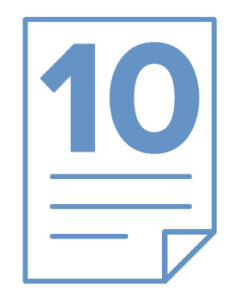 ISO 9001 Clause 10 Improvement
ISO 9001 Clause 10 Improvement
“The organization shall determine and select opportunities for improvement and implement any necessary actions to meet customer requirements and enhance customer satisfaction.”
Improvement can take place by improving products and services to meet requirements, correcting, reducing, or preventing undesired results and improving the performance and effectiveness of the quality management system.
ISO 9001 Clause 10, Subsection 10.2 Nonconformity and Corrective Action
This clause subsection requires that when there is a nonconformity, the company should take action to control and correct it and deal with the consequences as applicable. It also requires evaluation of the need for action to eliminate the cause of the nonconformity, implement any action needed and review the effectiveness of any action taken.
Subclause 10.2.2 requires that documentation be retained as evidence of the nature of nonconformities and the actions taken and the results of any corrective action.
ISO 9001 Clause 10, Subsection 10.3 Continual Improvement
“The organization shall continually improve the suitability, adequacy, and effectiveness of the quality management system.”
This clause encourages organizations to consider ISO 9001 Standards to be a constructive guide for continual improvement by considering the results of the analysis and evaluation and the outcomes of the management reviews.
If you certify to ISO 9001, many of the other standards integrate nicely and are much easier to implement because they are based on the same structure. These related standards are:
ISO 14001
ISO 45001
ISO 13485
ISO 27001
ISO 20000-1
For more information on certifying to these other standards, please contact us.
